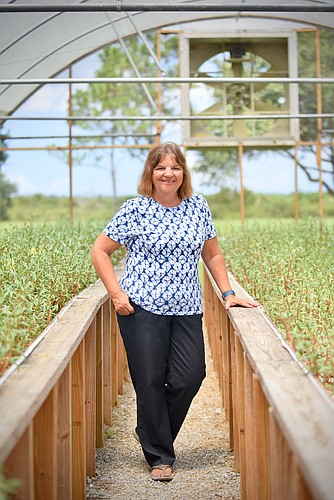- April 26, 2025
-
-
Loading

Loading

While crowds are admiring the sharks, manatees, Molly the Giant Squid and other creatures at Mote Marine Laboratory and Aquarium, a dedicated team of people works at another Mote facility to help feed the world.
It’s called Mote Aquaculture Research Park, one of the organization’s four satellite locations and one of two that’s dedicated solely to research. (The other is in the Florida Keys.) MAP is located on Fruitville Road, 7 miles east of Interstate 75 in Sarasota, and is not open to the public.
The 200-acre, 20-year-old facility has roughly 40 scientists and other specialists working to develop sustainable technology to improve aquaculture practices, restock depleted species and play a role in developing a viable aquaculture industry in the U.S.
In other words, helping to sustainably feed the world.
A key component of aquaculture is fish farming, which has earned something of a bad reputation through the overuse of antibiotics, overcrowded facilities, dumping wastewater into the environment and other wrongdoings.
Kevan Main, Mote’s associate vice president for research who heads up MAP, says some of the criticism is valid, but she’s seeing a trend toward more responsible practices.
MAP’s work comes at a crucial time. Over the past 60 years, global demand for fish meat has doubled while supply has dropped. Nearly 60% of the Earth’s fisheries are being fished to their capacity, and 34% are overfished, according to Mote’s website. “There’s no more sustainable protein that’s produced than through fish farming,” Main says. In 10 years, fish farms are expected to supply nearly two-thirds of fish meat around the world. And the hope is that the techniques developed at Mote become commonplace.
To that end, MAP operates as a small commercial fish farm, which sells redfish and pompano to wholesalers and directly to local restaurants including Indigenous in Sarasota, Mar Vista on Longboat Key and The Sandbar on Anna Maria Island. How’s that for fish to table? However, Main says the “goal is not to be a working fish farm but to test the processes and provide the technology and information to show that it can be done safely and sustainably.”
One of the key components of that aim is a three-stage water filtration system, developed fully in house, that allows 100% recycling of salt water. MAP is one of the few totally recirculating fish farms in the world. Full saltwater reuse is rare in commercial fish farming, but MAP is working to make it cost efficient. As coastlines get more developed, and land prices continue to go up, it’s important to move fisheries farther inland.
One of MAP’s long-standing initiatives involves snook, a much-desired and protected sport fish that is not available commercially. The facility is able to spawn, mature and release the fish into nearby creeks and rivers so they’ll find their way into the Gulf.
It wasn’t always so. Early on, Main and her team had to catch wild snook in Sarasota Bay amid their natural spawning cycle — during new and full moons from May to December — and bring them back to the compound to harvest the eggs and sperm to birth and raise more fish. “We were catching fish and dodging lightning bolts,” Main says.
That changed in 2006 when MAP developed a system that takes snook through their full life cycle. Main estimates that, depending on the year, MAP releases 8,000 to 15,000 snook into the wild.
Another, more recent, MAP innovation is the integration of fish and plant production. Fish wastewater moves through mangrove houses, which help cleanse the water for its return to the fishery. The animal/plant cycle also includes the growing of sea vegetables, specifically purslane, a coastal plant that’s a relative of spinach. This, too, serves to clean the water before its return to the fish. The same local restaurants that purchase MAP fish are buying and integrating purslane into their menus, Main says.
Late last year, MAP expanded to confront a problem that’s very much in the news: red tide. In a new, 29,000-square-foot building, scientists are “studying how to deal with red tide, which is a naturally occurring event,” Main says, “how to diminish its impact on the environment and researching its impacts on different species.”
Red tide mitigation research has been going on at the main Mote campus for many years.
Another MAP endeavor, also new, is the International Coral Gene Bank, “where we are maintaining colonies of corals from a whole range of different species from Florida waters,” Main says. “We’re creating repositories for corals so that we can provide them for restoration.”
So you might say that the team at MAP is not only helping to feed the world, but it’s helping to save the world, too.